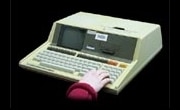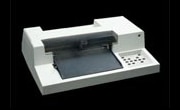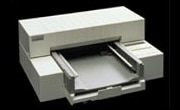OPAL History
In 1985, Nigel Harradine and David Birnie wrote a paper - published in the Journal of Maxillofacial Surgery - entitled "Computerized prediction of the results of orthognathic surgery." [J Maxillofac Surg. 1985 Dec;13(6):245-9.]. This used a program written in BASIC, running on an HP-85 microcomputer. If you want to see what an HP-85 looks like, you might like to visit Hewlett Packard's Virtual Museum: http://www.hp.com/hpinfo/abouthp/histnfacts/museum/personalsystems/0029/index.html
In 1987, Nigel asked George Chauvet to write a Orthognathic Planning program for the IBM PC. OP version 1.0 was released in 1988. It ran under MS-DOS and had no on-screen graphics - all graphical output was provided by an HP Plotter (e.g. HP 7475A).
Later versions of OP provided plotting to screen and the ability to print the screen to an HP deskjet printer, which provided a somewhat cheaper alternative to plotters. The final version of OP was 3.8, released in 1997.
Here is a screen shot from OP 3.8:

Development of a Windows-based Orthognathic Planning program began in 1994, with OPAL 1.0 released in 1997. The "Opal X-ray Viewer" program - now "Opal Tracing" - still displays tracings in a similar layout to that plotted by the old OP program - but with more analysis options and interactive orthodontic and surgical prediction.

Later versions of OPAL introduced on-screen digitising of digital radiographs and many other features, including the ability to generate prediction montages...

See the OPAL 2.2 and older versions page and the Screenshots page for more details.



